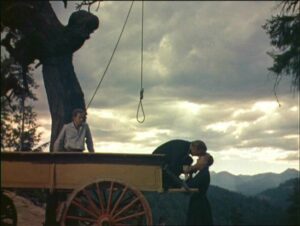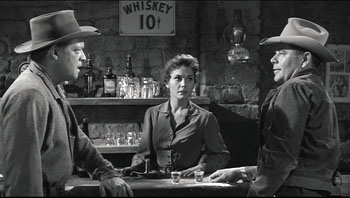The Delmer Daves Problem
Written for my En movimiento column for the September 2013 issue of Caiman Cuadernos de Cine. Reseeing The Hanging Tree tonight, I was fascinated to discover how much McCabe and Mrs Miller was indebted to its prostitutes and its fires, and how often Daves could use a crane as if it were a musical instrument.— J.R.
“Many of Delmer Daves’s films are beloved, but to say that he remains a misunderstood and insufficiently appreciated figure in the history of American movies is a rank understatement.” This is how critic Kent Jones begins the second of his two essays accompanying the simultaneous Criterion releases on DVD and Blu-Ray of Jubal (1956) and 3:10 to Yuma (1957), the first two in a string of three Westerns that Daves made with Glenn Ford. (The third was Cowboy in 1958.)
I saw the two Blu-Rays, in reverse order, on the same day, and I agree entirely with Jones that 3:10 to Yuma (ignoring its reportedly lamentable recent remake) is a remarkable achievement — as much for Glenn Ford’s performance as a charismatic villain as it is for the diverse dramatic and visual nuances of Daves, working in black and white and widescreen. Speaking as someone for whom Glenn Ford’s heroism in my youth was as important as that of James Stewart or Cary Grant, I was also astonished by the unpredictable and multileveled killer-hipster and delicate gangleader-womanizer he creates here (and also grateful for a fascinating interview with his son and biographer Peter Ford, included as a bonus). Read more



